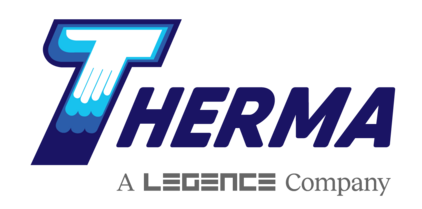by Ali Kriscenski
A company’s bottom line is only as healthy as its operational efficiency. The cost of energy for heating and cooling a company’s offices and facilities can significantly impact financial stability. For businesses in seasonal locations, the colder winter months can bring on a range of operational challenges that can increase overhead. Here’s a look at how to increase energy savings during winter.
5 Winter Energy Saving Tips for Year-Round Savings
Winter weather will reveal the inefficiencies in a building envelope, either through low thermal comfort, higher energy bills, or thermal variance issues such as ice dams. Fortunately, most problems that contribute to energy leaks can be identified and remedied before the cold months set in. Here are 5 ways to conserve energy in the winter:
1. Schedule a Walk-Through Inspection
In addition to annual and biannual system maintenance, building owners and managers can schedule regular inspections of the building’s windows, doors, roofing, basements and attics.
A walk-through inspection can help identify damage to building components, such as deteriorated siding or missing roof material. The team can check that weather stripping and threshold barriers are intact at doors and windows and that all mechanisms — hinges, handsets, and locks — are working. Any doors or windows that aren’t working or difficult to close and lock should be noted and scheduled for repair.
In attics and basements, water leaks could mean infiltration through roofing or siding. In winter months, these leaks can be altered by freeze/thaw cycles, compromising structural components and causing damage. Often unfinished and unconditioned, these areas are also prone to energy loss or infiltration. In unfinished spaces, missing or damaged insulation can be identified and replaced.

2. Use Thermal Imaging for Energy Savings
Along with flashlights and moisture meters, thermal cameras are becoming standard tools for anyone handling preventative building maintenance. Thermal imaging captures infrared radiation and creates a visual display of the thermal variances. This data can be instrumental when looking at a building envelope for potential energy leaks. Thermal imaging can ‘see’ areas that may need more insulation, repairs or replacement before issues create costly problems.
3. Conduct a Blower Door Test
A thermographic inspection can complement a blower door test to calculate a building’s energy efficiency. A blower door test draws air out of a building, creating low-pressure inside. This pressure differential draws air in through envelope cracks, gaps or penetrations. Using a thermal camera during a blower door test increases the accuracy of the inspection and helps identify repairs that will increase energy savings.
4. Evaluate HVAC System Performance
In conjunction with your building envelope inspection, maintenance should check the HVAC system for any issues affecting system performance. Your annual or biannual maintenance should be in conjunction with any needed calibrations, repairs, or replacement of outdated equipment well before winter. Having systems working efficiently will help reduce energy use during the winter and extend the life of your HVAC system and components.
When considering equipment upgrades, owners can consult with an MEP professional to learn about the most current strategies and systems for energy-efficient facility management. Some improvements are simple retrofit devices, such as a heat recovery ventilation system. Other upgrades — such as switching to renewable energy like solar or geothermal — may require much more research and upfront investment but could provide significant long-term energy savings. The cost-effectiveness may be improved by local, state, or federal programs with incentives geared towards improved energy efficiency.

5. Install Smart Thermostats and Monitor Indoor Air Quality
Building controls have become more integrated and automated, allowing building owners and managers greater monitoring capabilities for energy efficiency and indoor air quality (IAQ). Automated monitoring devices like smart thermostats can more efficiently manage environmental conditions, such as temperature and humidity, working towards the owner’s energy goals.
The ability to monitor conditions more accurately also provides owners with the opportunity to provide more consistent thermal comfort to occupants. This, in turn, helps reduce the individual adjustments that occupants make and inadvertently compromise energy efficiency, like opening windows or adjusting thermostats.
Smart building automation can also detect motion, occupancy levels, temperature, toxins and more. With sensors in place, buildings will adjust to the daily requirements of occupants and systems to save energy while ensuring maximum comfort levels of light, temperature, humidity and air exchange.
Energy Efficiency Strategies in Winter and Beyond
Winter preparedness is a great incentive for implementing energy efficiency strategies and reducing operating costs. Building owners and managers can build upon their cold-weather plans toward year-round energy goals. Working with occupants, facilities personnel and trusted contractors, you can develop an energy efficiency strategy with short, mid and long-term goals that can help meet operational objectives and strengthen investment returns.
Ali Kriscenski was trained in high-performance building design at Boston Architectural College. She has worked with leading architecture and construction firms in NYC and New England and served on the executive team at the Forest Stewardship Council International. She was the managing editor at Inhabitat and has worked pro bono for the Green Building Institute, ISEAL Alliance and Habitat for Humanity.
Sources
U.S. Department of Energy (DOE) – How Thermographic Inspections Work
International WELL Building Institute – Well Building Standard: Air







